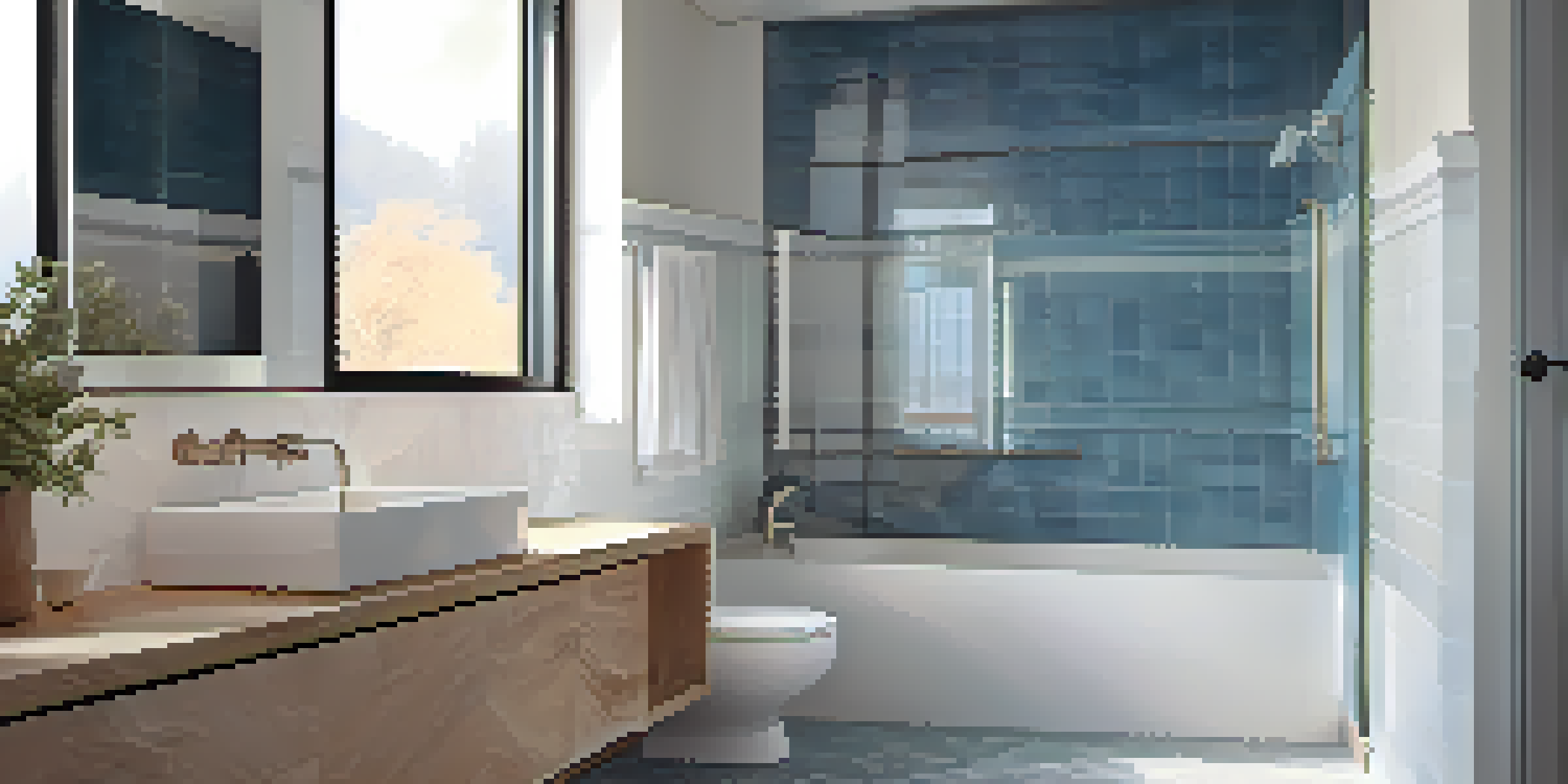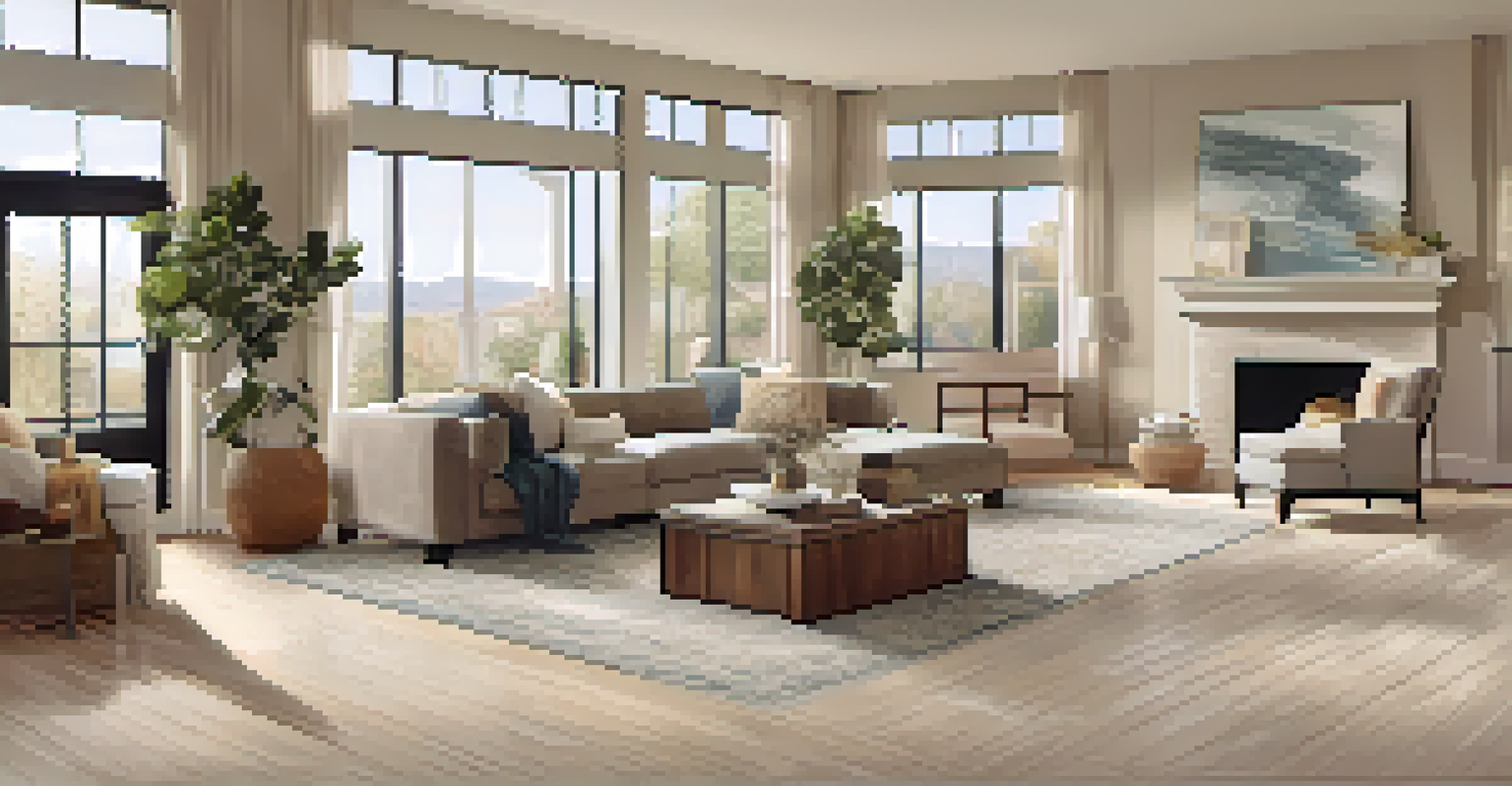Essential Home Accessibility Modifications for Everyone

Understanding Home Accessibility: What It Means for You
Home accessibility refers to the design and modifications that allow individuals of all abilities to live comfortably and safely in their homes. This concept is vital because it promotes independence and dignity for everyone, including the elderly, those with disabilities, and even young families. Think of it as creating a welcoming environment where every room is easy to navigate and use.
Accessibility allows us to tap into our full potential and leads to a life of dignity and independence.
Imagine trying to move through your home with a wheelchair or crutches; small obstacles can become significant challenges. Accessibility modifications help eliminate these barriers, allowing all residents and visitors to enjoy the space without frustration. It’s not just about making things easier; it’s about creating a home that supports a better quality of life.
As we explore essential modifications, remember that accessibility should be inclusive, addressing a variety of needs. Whether it’s installing grab bars in the bathroom or widening doorways, these changes can make a significant difference. Everyone deserves to feel at home, and accessibility plays a key role in achieving that.
Widening Doorways for Greater Access and Freedom
One of the most straightforward yet impactful modifications is widening doorways. Standard door widths can be restrictive, especially for those using wheelchairs or mobility aids. By increasing the width to at least 32 inches, you open up a world of possibilities, allowing easy passage for everyone.

This modification not only benefits those with mobility issues but also makes it easier to move furniture and other large items throughout the home. Imagine hosting a gathering and discovering that your guests can comfortably navigate through your space without bumping into furniture. Widened doorways create a more inviting atmosphere, encouraging social interactions.
Home Accessibility Enhances Independence
Creating an accessible home promotes comfort and dignity for individuals of all abilities.
In addition to practical benefits, wider doorways can enhance the overall aesthetic of your home. They create a sense of openness and flow between rooms, making your living space feel more connected. This simple change can transform your home into a more accessible and enjoyable environment for everyone.
Installing Ramps: A Safe Path for Everyone
Ramps are a crucial modification for homes with steps, providing a safe and accessible route for those with mobility challenges. They enable individuals to enter and exit the home without the risk of falling or straining themselves. A well-designed ramp can be both functional and visually appealing, blending seamlessly with your home’s architecture.
The true measure of any society can be found in how it treats its most vulnerable members.
When considering a ramp, the slope is vital. A gentle incline—typically a ratio of 1:12—ensures that it is usable for individuals of all abilities. Adding handrails on both sides can provide additional support and security, making the ramp a reliable option for everyone in your household.
Ramps aren't just for those who use wheelchairs; they can also benefit parents with strollers, visitors with heavy bags, or anyone who might find steps challenging. By installing a ramp, you're not only enhancing accessibility but also creating a welcoming entrance that invites all to your home.
Grab Bars: Simple Safety Enhancements for Bathrooms
Grab bars are an essential addition to bathrooms, providing support for individuals as they navigate slippery surfaces. These bars can be installed near toilets and in showers or bathtubs, offering peace of mind to users who may need extra stability. With grab bars, you’re not just investing in safety; you’re promoting independence.
Imagine stepping into the shower and feeling secure knowing you have something to hold onto. Grab bars can reduce the risk of falls, which is particularly important for the elderly or those recovering from an injury. Their installation is straightforward and can be done in a variety of styles, ensuring they fit well with your bathroom's decor.
Simple Modifications Improve Safety
Installing features like grab bars, ramps, and non-slip flooring significantly reduces the risk of accidents.
Beyond functionality, grab bars can blend seamlessly into your home design. With various finishes and designs available, you can choose options that enhance your bathroom's aesthetic while providing necessary support. This combination of safety and style makes grab bars a must-have for any accessible home.
Lever Handles: A Small Change with Big Impact
Switching from traditional doorknobs to lever handles is a simple yet effective way to improve accessibility. Lever handles are easier to operate, requiring less grip strength and dexterity, making them ideal for individuals with arthritis or limited mobility. This small change can significantly enhance the ease of navigating your home.
Consider the difference: with a lever handle, you can easily push down with your elbow or forearm, allowing hands full of groceries to get through the door. This practical modification not only increases convenience but also promotes independence for all household members. It's a great example of how a minor adjustment can lead to major benefits.
Moreover, lever handles come in various designs and finishes, allowing you to maintain your home's aesthetic while improving functionality. By making this change, you’re fostering an inclusive environment that welcomes everyone, regardless of their physical abilities.
Non-Slip Flooring: Enhancing Safety at Home
Choosing non-slip flooring is crucial for preventing accidents, especially in areas like kitchens and bathrooms where spills can occur. Slippery surfaces can pose significant risks, particularly for older adults or those with balance issues. By selecting materials with a non-slip texture, you can create a safer home environment.
Consider alternatives like textured vinyl or rubber flooring, which provide better traction while being easy to clean. These materials not only enhance safety but can also add a modern touch to your home’s design. You’ll find that these small changes can make a huge difference in everyday life.
Open Spaces Foster Social Interaction
Designing open layouts encourages easier movement and promotes connections among family members.
Moreover, non-slip flooring isn't just about safety; it also contributes to a sense of comfort and security. When individuals feel safe moving around their home, they can focus on enjoying their space rather than worrying about potential falls. Ultimately, investing in non-slip flooring is a step towards a more accessible and inviting home.
Creating Open Spaces: The Key to Accessible Living
Designing open spaces in your home can significantly enhance accessibility for everyone. Open floor plans allow for easier movement, making it simpler for individuals using mobility aids to navigate without obstacles. This layout not only fosters a sense of freedom but also encourages social interaction among family members.
Imagine a living room where everyone can gather without barriers between them, promoting conversations and togetherness. Open spaces can also make it easier to adjust furniture arrangements as needed, accommodating different activities and gatherings. It’s about creating a versatile environment that adapts to your lifestyle.

Additionally, open spaces can make your home feel more expansive and inviting. When you eliminate unnecessary walls and barriers, you create a lighter, airier atmosphere that everyone can enjoy. By prioritizing open spaces, you're making a commitment to accessibility that benefits all inhabitants.
Lighting Solutions: Brightening Up Accessibility
Proper lighting is a crucial yet often overlooked aspect of home accessibility. Well-lit spaces reduce the risk of accidents and help individuals with visual impairments navigate their surroundings more easily. Strategically placed lights can enhance visibility and create a safer environment for everyone in the home.
Consider installing motion-sensor lights in hallways, staircases, and entryways. These lights automatically illuminate when someone approaches, ensuring that dark corners don’t pose a hazard. This small modification can significantly improve safety, especially for those who may get up during the night.
Moreover, using natural light wherever possible can enhance the overall ambiance of your home. Large windows and skylights create bright spaces that are not only inviting but also beneficial for mental health. By focusing on effective lighting solutions, you can ensure your home is both accessible and enjoyable for all.